In 2023, global programmatic ad spend amounted to an estimated $558 billion, with projections exceeding $700 billion by 2026. While the United States remains a dominant market, countries like China and the United Kingdom are increasingly embracing programmatic buying for its unparalleled benefits.
In the realm of video programmatic advertising, bots automate ad space purchases based on predefined criteria established by advertisers. Advertisers meticulously outline their target audience, provide ad assets, and allocate a budget. Subsequently, the program utilizes real-time bidding to showcase the ad to users matching the ideal customer profile. The highest bidder secures the opportunity, all within the time it takes for a page to load.
Also, read more about programmatic video ad networks.

What is programmatic video advertising
Programmatic video advertising is a technology of algorithmic purchase of video ad impressions only for target users. Programmatic has extensive targeting capabilities and self-learning artificial intelligence that optimizes the ad campaign in real time. About 75% of online video ads are shown automatically with programmatic video advertising and the percentage will only increase each year.
Programmatic media buying platforms allow brands and marketers to buy advertising through an ad exchange. It gives brands and marketers several distinct and very important advantages.
First, it eliminates intermediaries and simplifies the programmatic video ad buying process to a 1-on-1 deal. Second, because of the detailed targeting demographics available, programmatic ensures that every impression a brand or marketer receives when programmatic video buying is much more targeted and, therefore, relevant. It turns out that such advertising is much more effective at getting the desired conversions.

Benefits of programmatic video advertising
Multichannel
Programmatic video ads can be placed on different platforms, and they can be transmitted to various devices. This is a worthy advantage, especially considering how many gadgets people use in their daily lives. Programmatic advertising can be streamed on everything from TV to smartwatches.
Efficiency
The whole process of buying ads is automated and takes seconds, saving time and budget. In addition, real-time bidding ensures the delivery of a particular ad to a specific user at a certain time.
Transparency
The advertiser always knows where the ad was placed, who saw it, and how they interacted with it, thanks to a precise analytics system. Moreover, this data can later be used to set up future ad campaigns.
Speed
Audience buying happens in real time and takes moments. In addition, at any moment of the advertising campaign, you can see the actual data on its progress and, if necessary, correct the settings, which also significantly saves time and resources.
Broad coverage of your target audience
The expansion of the inventory for advertising on sites allows programmatic videos to reach a large number of relevant users.
Disadvantages of programmatic video advertising
Ad fraud
In the digital advertising world, you can run into fraudsters and the field of advertising is no exception. Special programs can fake video ads views or create hidden views. Scammers can also create click farms, through which they can simulate users performing valuable actions.
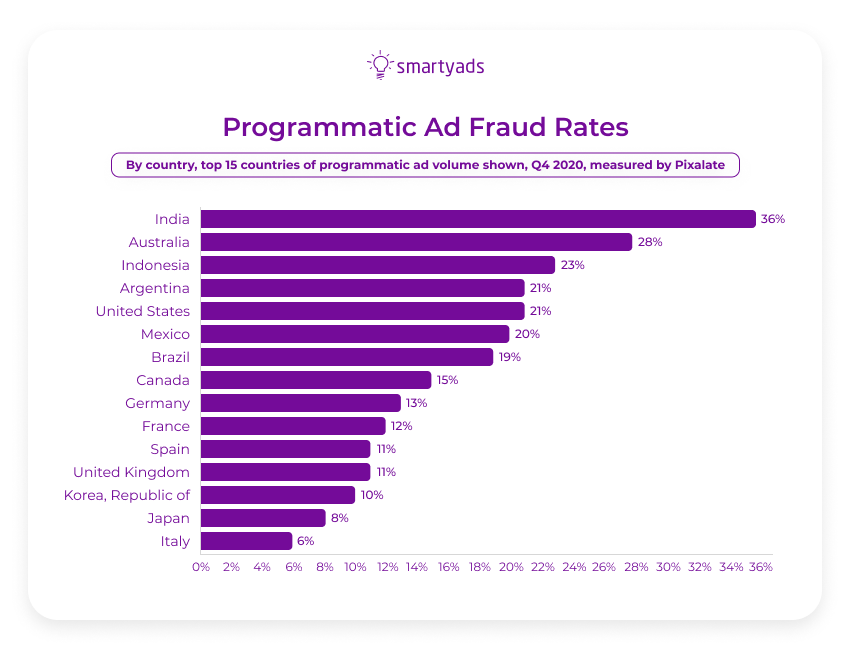
Therefore, it is recommended to work with large and proven software platforms and to follow current security protocols aimed at countering ad fraud activity.
Data Quality
Data quality is a hot topic in the programmatic advertising industry. At times, data may be provided by a third party, but not all providers of such data do their jobs with integrity. Also, if you're using an ad network, it's impossible to tell exactly where your ads will be shown. Sure, there are lists of prohibited words or resources where your ads cannot be published, but there is still no 100% accuracy in where your ads will be shown.
It is also worth discussing the sources and quality of the data used with your media partner before launching your advertising campaign.
Technical requirements
Programmatic video advertising technology is a fairly complex format that requires compliance with certain technical conditions. You need to be sure that the file size of the ad does not exceed the recommended size. When placing video ads, you need to monitor the performance of landing pages, loading speed, and other technical issues.

Formats of programmatic video advertising
In-stream video ads
If you've ever watched anything on YouTube, you're probably familiar with this type of advertising. It allows ads to be inserted into a digital video clip that is played by the user at a specific point in time.
In this format, the ad is played inside the video player. It can be divided into:
- Pre-roll — ads are shown before the beginning of the video;
- Mid-roll — showing video ads in the middle of the video;
- Post-roll — ads are shown at the end of the video.
This type is more expensive but has the highest visibility.
Also, each type of in-stream video is divided into skippable and unskippable. Meaning, the user can either skip the advertising clip, or they are obliged to see it to the very end.
The audience intends to watch the online video content in which the ad appeared, so users usually stay on the page until the end of the video ads. Like on those programmatic video examples:

In display ads
This type of advertising appears in the recommendations from YouTube or in the first lines of YouTube searches. Also, programmatic display advertising videos can be in the upper right corner of the screen if you use the desktop version of the app. Such online videos don't play on their own, the user has to click on them to view the video.
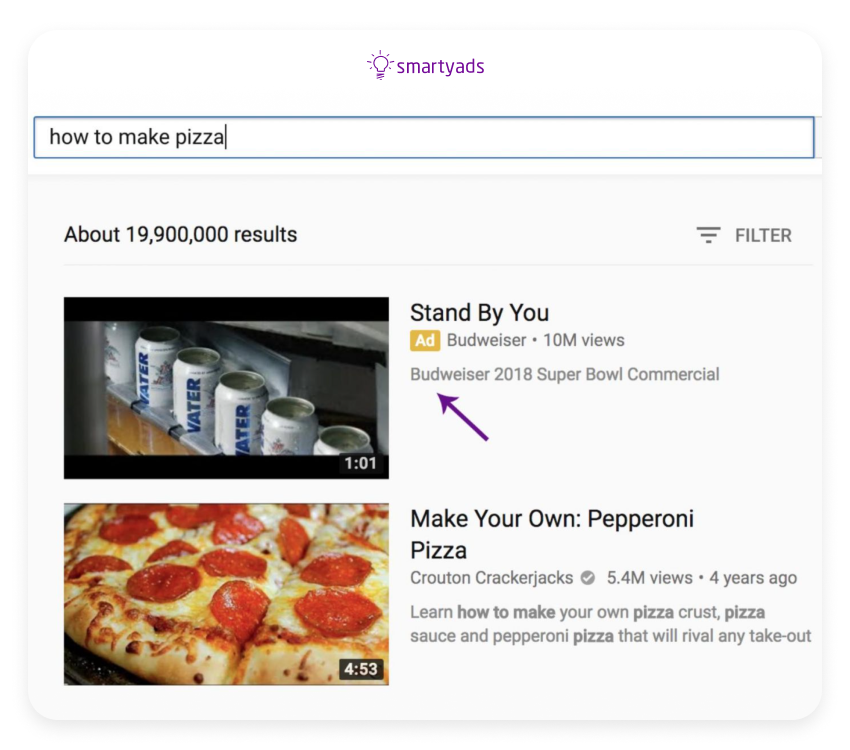
Outstream video ads
Out stream video ads are the ads, which are displayed between text messages, online articles, and other content in the news feed; ad space is not dependent on the video player.
The advantage of this format is a wider selection of video ad inventory. When a video comes into view, it plays without sound, but the user can turn the sound on, watch the video content and navigate through the ad, or just swipe and close it.
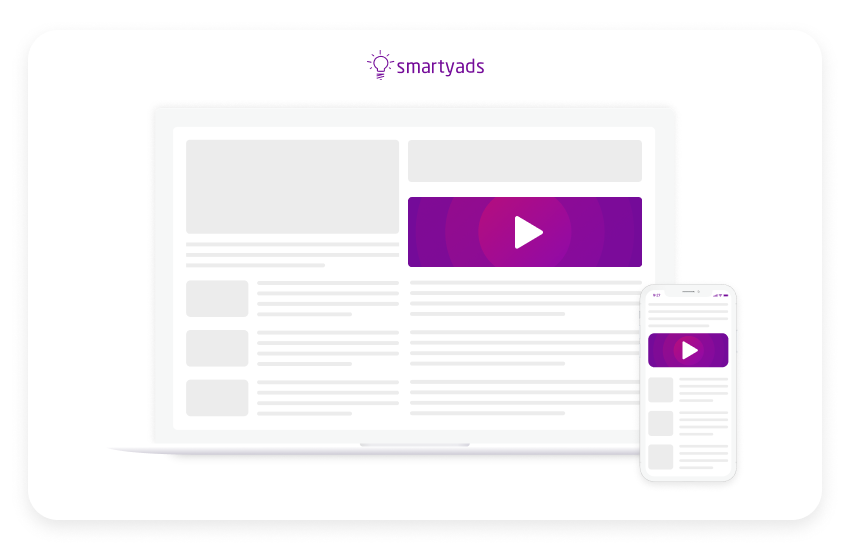
In-Banner video ads
The video is displayed inside a banner. When an ad comes into view, the video automatically plays without sound. This format is very similar to outstream video, but they differ in the way that in-banner video usually plays a looped and short video, while outstream can contain a full clip.
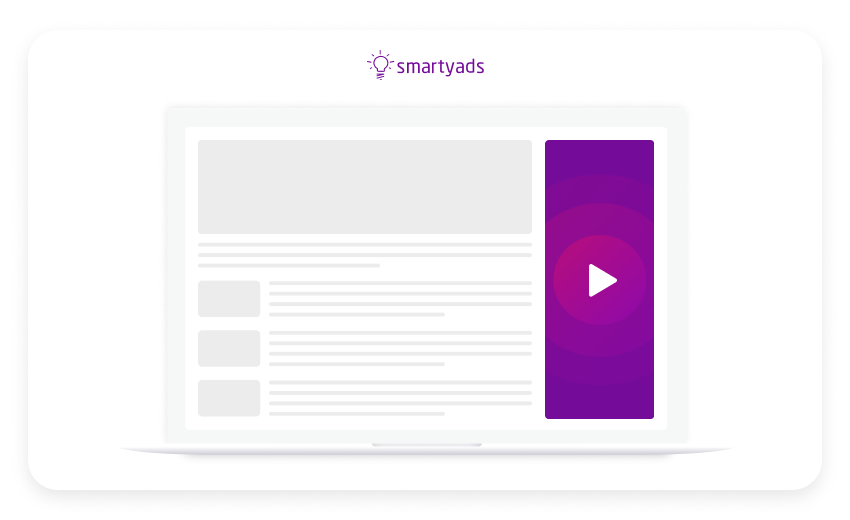
In-game video ads
This format of video advertising is usually used to place targeted ads in game apps. Recently, in-game videos have become an extremely popular advertising format for both advertisers and publishers, represented by game app developers.
There are several types of video ads — interactive, cross-page, and rewarded video.
Interactive advertising
Interactive advertising allows you to interact with the video: try out the gameplay, select options, and watch a preview of the advertised application. This type is characterized by high rates of engagement and conversion.
Cross-page advertising
Cross-page ads are shown at the moment of transition from one thing to another inside the game. For example, when loading between levels or when switching between different locations. Usually, the player can minimize or close such a video after a certain amount of time required for the loading of certain game data.
Rewarded video advertising
Rewarded video offers users various in-game bonuses for watching video ads. This is probably the most popular and requested format of in-game advertising at the moment. Not only it doesn't annoy the user by showing the advertisement in the middle of the game, but also motivates them to get more involved in the gaming process. And because of the bonuses received in the game and the good mood, players form a positive image of the brand advertised this way.
How to create effective programmatic video ads
In order to create effective video ads, you have to follow certain rules. In this paragraph, we will list the basic conditions necessary to create a good, memorable video ad that will fulfill its intended function.
Take into account the ad placement
Different types of video ads work differently. Therefore, you need to determine on which platform your video content will look best. For example, a video that can't be understood without sound is likely to be useless in the in-banner ad format but will work great for the in-stream format.
A short and clear message for the user's attention
Sometimes commercials are works of art. The Cannes Festival winners are watched not because they're promoting a famous car brand or soda, but because they're masterpieces of video making. However, if you have a clear purpose (for example: to inform about the conditions of the starting promo), then make a long, burdened plot reel to nothing. Advertising should be short and clear.
Creativity
Despite the fact that you do not have much room for your imagination, you still have to throw it into the abyss of ideas for ads. Since you are fighting for the attention of users who are used to all the possible tricks of marketers, you will have to stand out with something. So don't forget to be creative. You vitally need the attention of users; today, it is the most expensive commodity in the advertising market.
Take into account the audience
Any marketer knows that advertising will be different depending on what audience it appeals to. Ads for zoomers will be quite different than ads for millennials, and ads for Japanese will be very distinct from ads for Americans.
4 Trends for Programmatic Video Advertising
AI-Driven Optimization
Programmatic video advertising increasingly leverages artificial intelligence (AI) to optimize campaign performance. AI algorithms analyze vast amounts of data in real-time to identify trends, predict user behavior, and optimize ad placements for maximum impact. By continuously refining targeting parameters and adjusting bids based on performance metrics, AI-driven optimization enhances ad relevancy, engagement, and ultimately, ROI for advertisers.
Integration of Immersive Technologies
The future of video programmatic advertising is poised to embrace immersive technologies like augmented reality (AR) and virtual reality (VR). AR and VR offer immersive and interactive experiences that captivate audiences and drive deeper brand engagement. By integrating AR and VR elements into video ads, advertisers can create immersive storytelling experiences that blur the lines between advertising and entertainment. As AR and VR technologies become more accessible and widespread, expect programmatic video advertising to incorporate these immersive features to deliver unforgettable brand experiences.
Contextual Targeting
Contextual targeting is gaining prominence in programmatic video advertising as advertisers seek to align their ads with relevant content. By analyzing the context of web pages or video content, advertisers can ensure that their ads appear alongside related content, increasing relevance and engagement. With advancements in natural language processing and machine learning, contextual targeting can accurately interpret the meaning and sentiment of content, enabling advertisers to deliver more contextually relevant ads to their target audience.
Cross-Device Targeting
Cross-device targeting allows advertisers to reach consumers across multiple devices, including smartphones, tablets, desktops, and connected TVs. With the proliferation of devices and the increasing fragmentation of media consumption, cross-device targeting enables advertisers to maintain consistent messaging and frequency across various touchpoints, ensuring a seamless and cohesive brand experience. Advanced cross-device tracking technologies enable advertisers to understand consumer behavior across devices and deliver personalized ad experiences tailored to individual user preferences and device usage patterns.
Conclusions
Programmatic video advertising has become an essential component of every marketer's toolkit. With the advent of programmatic video advertising platforms, video has evolved into a versatile and widely accessible ad format that is easily placed across various channels. This represents a significant milestone for the programmatic industry, unlocking new opportunities for brands to enhance their advertising strategies. SmartyAds DSP offers the capability to set up and run programmatic video campaigns seamlessly, empowering marketers to reach their target audience effectively and efficiently, regardless of scale or timing.
Launch your programmatic video ads on SmartyAds DSP!

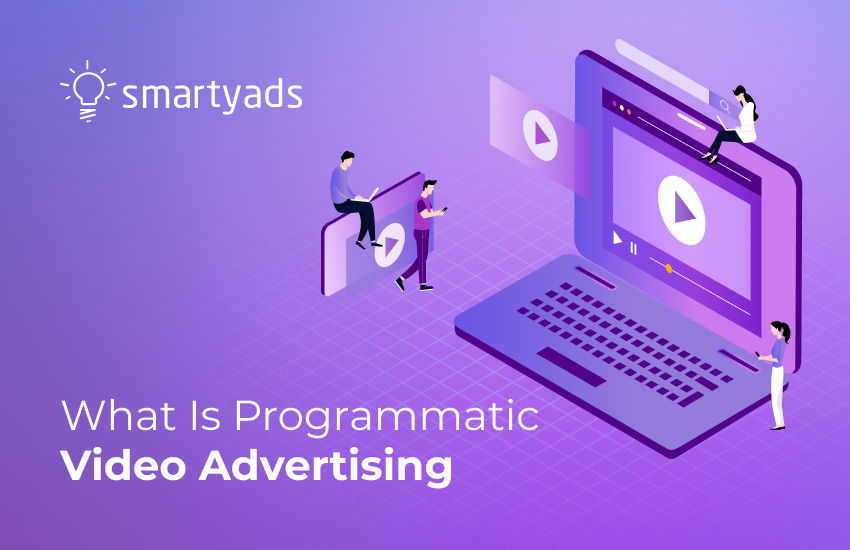
.webp)


